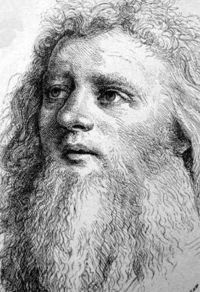(Augsburg 1465- Issenheim, Alsace 1524)
Hans Holbein the Elder was a German Gothic painter from the fifteenth Century. Hans the Elder was a pioneer and a leader in the change that German Art went through from the Gothic to the Renaissance style.
Holbein remained in his home city until 1494. He exerted his influence in the whole southern Germany as the most valued altarpiece painter. His works can be found in Ulm (1499), in Frankfurt (1501, altarpiece of the Dominican, in the Museum) and in Issenheim (1517), where he finally settled.
Among his outstanding religious works, which were painted with the traditional German style, we find the altarpieces of the Basilica di Santa Maria Maggiore (Rome) and Saint Paul in Augsburg (Augsburg Gallery), his work Scenes from the Life of the Virgin (Cathedral of Augsburg), Death of the Virgin (Basel), the altarpiece for the Kaisheim Abbey with scenes of the Passion (1502, Munich), the altarpiece of Saint Sebastian (1516, Munich) where we find his self-portrait and Fountain of Youth (1519, Lisbon).
Holbein has left portraits of great realism (Portrait of a woman, Basel). The portraits of his sons and disciples Ambrosius and Hans Holbein the Younger (pencil drawing, 1511, Berlin) stand out among the rest.


